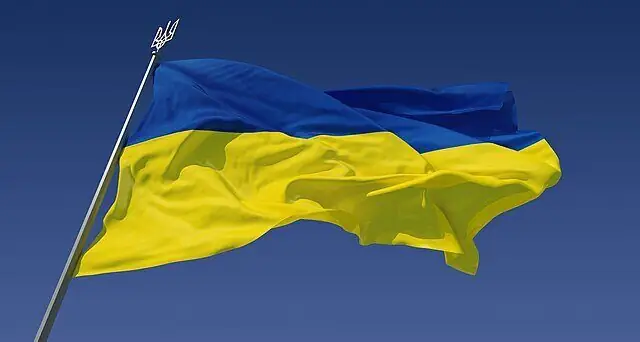Fact Checking Russia’s Invasion of Ukraine with PONARS Ukraine Task Force
As events unfold in Ukraine, PONARS Eurasia has created this page for the Ukraine Task Force to fact check statements made in regards to the 2022 invasion of Ukraine.
For members of the press: Please feel free to use materials from this page with the citation “according to [expert’s name] in a PONARS Eurasia press release.” For contact information for any of the quoted experts, please email: adminponars@gwu.edu. Experts on Ukraine available for commentary can be found here.
See the PONARS Eurasia Executive Committee Statement condemning Russia’s attack on Ukraine and Statement condemning scholars’ support for the invasion.
Ukraine did not start the war with Russia. Russia amassed around 200,000 troops around Ukraine in 2021, and on February 24, 2022, moved those ground forces into Ukraine from the south, east, and north, supported by airstrikes and missiles all over Ukraine. Ukraine did not provoke the war. Ukraine did not build up forces along its borders with Russia, did not strike inside Russia, its troops did not cross into Russia, and it did not launch attacks on Ukrainian civilians in the Eastern (Donbas) regions of Ukraine occupied by Russia. Russia’s initiation of the war was widely reported, including by Fox News, anchored at the time by Pete Hegseth, now U.S. Secretary of Defense (link to Fox News article).
US aid to Ukraine since Russia’s February 2022 full-scale invasion, through the end of 2024, has amounted to around $182bn, with $118bn of this invested in U.S., Ukrainian, and allied military power. About 70% ($121bn) of the total aid was designated to be spent in the United States to purchase weapons, support arms suppliers, and manufacturing, or on U.S. forces, according to the American Enterprise Institute, a center-right think tank, based on U.S. government data (link to AEI report). The Institute assessed: “Our military aid to Ukraine is revitalizing manufacturing communities across the United States, creating good jobs here at home, and restoring the United States’ capacity to produce weapons for our national defense” (link to AEI analysis). By the start of 2025, the actual amount of funds disbursed under those appropriations was $83.4bn, according to the U.S. Special Inspector General overseeing Ukraine response, with $56bn obligated but not yet disbursed, $40bn appropriated but not yet obligated, and $2.7bn expired (link to SIG report). These funds were appropriated as investment in U.S. and allied security, in the U.S. interest, and not as loans or gifts to Ukraine.
Zelensky is the legitimate, democratically elected president. He was elected in a free and fair competitive election certified by international monitors, with 73% of the popular vote in 2019. He continues to have a public mandate to govern, with 60% supporting the postponement of elections during wartime, according to a September-October 2025 poll by the International Republican Institute (link to IRI poll). Elections cannot be held in Ukraine while Russia continues its all-out invasion due to constitutional provisions and martial law, the impossibility of achieving representativeness given troop deployments and population displacement, and because the very act of attempting elections would legitimize Russia’s illegal occupation of 20% of Ukraine’s territory. Note: Elections in the U.S. World War II are an inappropriate analogy, as the U.S. mainland didn’t come under attack. The appropriate analogy is Britain, whose core territory was attacked, and where elections were suspended throughout World War II.
Zelensky’s ratings remain high, averaging around 55% since the summer of 2024, based on multiple independent opinion polls representative of Ukraine’s population under Kyiv’s control, using differently worded questions. This includes a 48% approval rating for Zelensky’s performance in the June 2024 survey by the Ukraine National Academy of Sciences Institute of Sociology and another Institute survey in November 2024 (link to survey), 69% approval in the September-October survey by the International Republican Institute (link to IRI poll), 57% trust in Zelensky in the February 2025 Kyiv International Institute of Sociology survey (link to KIIS survey), and 65% trust in him as president in the January 2025 Sociological Group Rating poll (link to survey).
It was impossible for Ukraine to negotiate the war’s end over the last three years or to prevent it earlier, other than by agreeing to Putin’s December 2021 ultimatum, which essentially demanded the abandonment of sovereignty from Ukraine (link to Reuters article). Putin has not withdrawn these essential demands of this ultimatum regarding Ukraine, most notably its foundational principle that Ukraine has no sovereign right to choose alliances, build its military as it sees fit, or restore its territories illegally occupied by Russia since 2014. The Russian terms for ending the war continue to demand that Ukraine abrogate the fundamentals of its sovereignty. Meanwhile, Ukrainian National Academy of Sciences Institute of Sociology polls in the summer and fall of 2024 showed that around 80-90% of Ukrainians continue to support freedom (democratic values) and independence/sovereignty, making deals on those terms with Russia unacceptable (link to survey).
Finally, Zelensky did not attack or insult Trump following U.S. and Russia talks in Saudi Arabia on February 18, 2025. Zelensky said he had great respect for Trump “as a leader of a nation that we have great respect for, the American people,” but voiced concern that Trump was being manipulated by Russia (verbatim: “living in Russia’s disinformation space”) (link to The Hill article). This concern reflects the horrors Ukraine experienced under Putin’s orders and the track record of Russia breaking deals, going back to the 1994 Budapest Memorandum, and a reminder of the risks of dealmaking with the Kremlin.
For Members of the Press
Task Force Members







